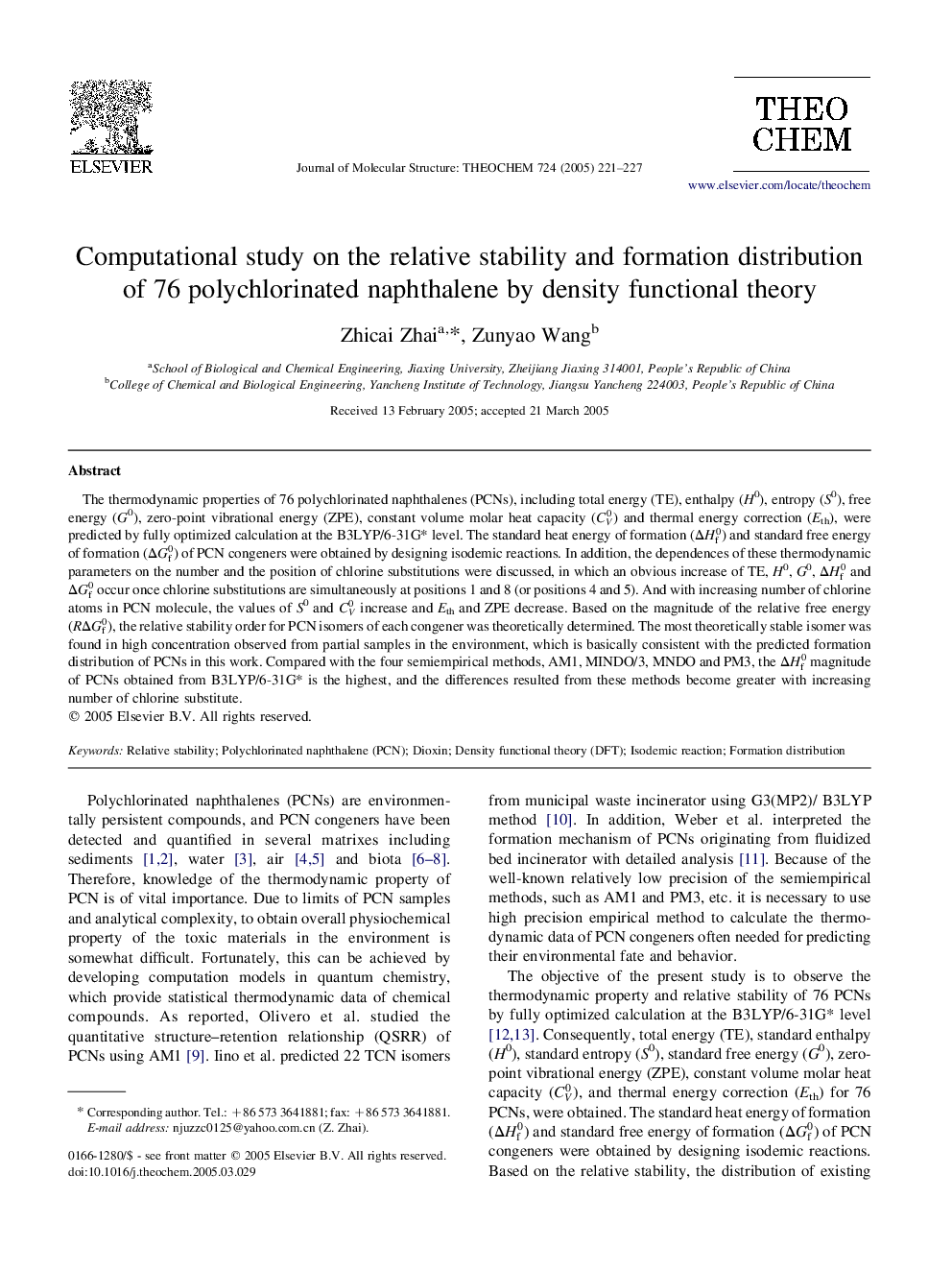| Article ID | Journal | Published Year | Pages | File Type |
|---|---|---|---|---|
| 9590807 | Journal of Molecular Structure: THEOCHEM | 2005 | 7 Pages |
Abstract
The thermodynamic properties of 76 polychlorinated naphthalenes (PCNs), including total energy (TE), enthalpy (H0), entropy (S0), free energy (G0), zero-point vibrational energy (ZPE), constant volume molar heat capacity (CV0) and thermal energy correction (Eth), were predicted by fully optimized calculation at the B3LYP/6-31G* level. The standard heat energy of formation (ÎHf0) and standard free energy of formation (ÎGf0) of PCN congeners were obtained by designing isodemic reactions. In addition, the dependences of these thermodynamic parameters on the number and the position of chlorine substitutions were discussed, in which an obvious increase of TE, H0, G0, ÎHf0 and ÎGf0 occur once chlorine substitutions are simultaneously at positions 1 and 8 (or positions 4 and 5). And with increasing number of chlorine atoms in PCN molecule, the values of S0 and CV0 increase and Eth and ZPE decrease. Based on the magnitude of the relative free energy (RÎGf0), the relative stability order for PCN isomers of each congener was theoretically determined. The most theoretically stable isomer was found in high concentration observed from partial samples in the environment, which is basically consistent with the predicted formation distribution of PCNs in this work. Compared with the four semiempirical methods, AM1, MINDO/3, MNDO and PM3, the ÎHf0 magnitude of PCNs obtained from B3LYP/6-31G* is the highest, and the differences resulted from these methods become greater with increasing number of chlorine substitute.
Related Topics
Physical Sciences and Engineering
Chemistry
Physical and Theoretical Chemistry
Authors
Zhicai Zhai, Zunyao Wang,
